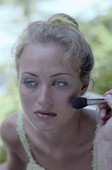
WEDNESDAY, March 14 (HealthDay News) — A newly approved gel appears effective in treating a condition called actinic keratosis, which is a common precursor to squamous cell skin cancer, a new study finds.
Earlier topical treatments took weeks or even months to treat the condition, but the new product — Picato (ingenol mebutate) gel — can work in a matter of days, according to the report in the March 15 issue of the New England Journal of Medicine.
“There are a number of agents available to treat precancerous skin lesions,” said study author Dr. Mark Lebwohl, a professor and chairman of dermatology at Mount Sinai School of Medicine in New York City.
“Most of the other ones are applied over a period of weeks to months and have a reaction that lasts for a long time, so it interferes with your life for a good period of time. This one is unique in that it is applied for only one to three days,” he said.
The U.S. Food and Drug Administration approved Picato for use on actinic keratoses in January. The new study was funded by LEO Pharma, the maker of Ingenol.
For the study, more than 900 people with actinic keratoses on their face or scalp, or elsewhere on their body (trunk, arms or legs) were randomly assigned to treatment with either Picato or an inactive placebo.
The researchers found that when used on the face or scalp, the gel cleared the condition nearly 43 percent of the time, compared with nearly 4 percent for the placebo.
When used on the trunk or extremities, the gel was again more effective than placebo — about 34 percent for the gel versus nearly 5 percent for the placebo, the study authors noted.
Local skin reactions such as redness and crustiness developed within several days, but were gone quickly, and side effects were mild to moderate and went away without any problem, according to the report.
And because treatment takes less time, patients are more likely to adhere to their treatment, said study co-author Dr. Neil Swanson, director of dermatologic surgery at Oregon Health and Science University in Portland.
“It is an option to treat these lesions, a good percentage of which will go on to evolve to skin cancer,” Swanson said.
In addition to skin gels, doctors treat actinic keratosis in other ways that include burning or scraping with an electric or laser device, cutting the tumor out, or freezing the tumor in a procedure called cryotherapy.
Commenting on the study treatment, Dr. Doris Day, a dermatologist at Lenox Hill Hospital in New York City, said that “it is efficacious and it’s good for patients who can’t tolerate other treatment.”
However, Day said she would most likely use this gel in combination with other methods to treat the condition.
“I don’t think I would use it as monotherapy,” she said. “I don’t think it penetrates deeply into the skin. So I would mix this with my other treatments such as laser and cryotherapy.”
Day stressed that it is important to treat actinic keratosis before it becomes skin cancer.
More information
To learn about actinic keratosis, visit the U.S. National Library of Medicine.

